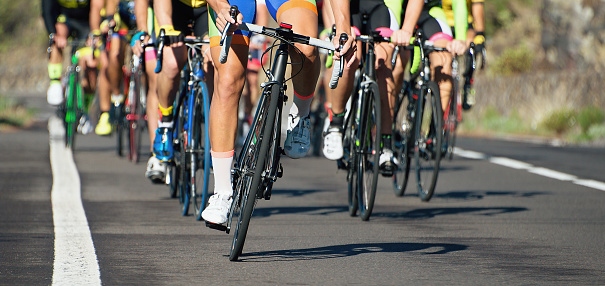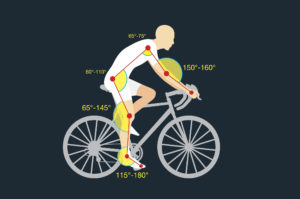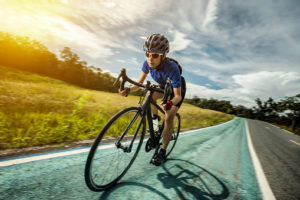
The single most effective investment you can make to enhance your overall bike performance is to get a professional bike fit. If that high-end bike you’re riding isn’t comfortable, then you aren’t optimizing the bike’s greatest features—not its aerodynamic, elongated tube shape, or slick integrated brakes and internal cable routing, not even the feather-light carbon frame—without the right fit, you aren’t going to yield the success you’re hoping (or paying) for.
We may be the same height as another rider and so require the same frame size, but our proportions vary widely, as do the nuances of our individual areas of weakness and histories of injury. The main goals of a professional bike fit include:
*Enhancing overall comfort.
*Preventing injury (and reducing/ eliminating existing pain).
*Improving efficiency and overall performance.
On a tri bike, comfort is relative and means dialling in the most comfortable position possible while being aerodynamic, which is of course very different than being at ease on your beater bike or city cruiser. Typically, this starts with an adjustment to your saddle—the key to being able to access your maximal power. Finding the right saddle and saddle position is not just a soft tissue concern, it allows for optimal pelvic support and rotation, both of which are essential to accessing strength/ power output. Once that core component is in place, fitters can address the numerous other areas that will boost performance and comfort including cleat positioning and even shoe choice, as well as frontal area aerodynamics such as hand/ aerobar position, neck and head position/ posture, and even helmet choice as it pertains to given set up.
 A dynamic bike fit such as the Retül system (or Trek’s Precision Bike Fit) uses a combination of personal evaluation and interviews with video analysis and motion capture, and pressure analysis to discern the best anatomical match for saddle choice. Significantly however, all this technology is only as good as the fitter’s experience. Josh Welbes, manager of the Trek Toronto store agrees,
A dynamic bike fit such as the Retül system (or Trek’s Precision Bike Fit) uses a combination of personal evaluation and interviews with video analysis and motion capture, and pressure analysis to discern the best anatomical match for saddle choice. Significantly however, all this technology is only as good as the fitter’s experience. Josh Welbes, manager of the Trek Toronto store agrees,
“Getting a proper bike fit will keep you comfortable and allow you to ride faster and further. Even if do not experience any discomfort on the stock setup, a good bike fit can help you put out more power. It’s important to get fit by someone who is knowledgeable about fitting and has years of experience and education. The most advanced 3D motion capture fit is a waste of money without a great fitter.” Be sure to do your homework and book with a fitter who comes well-recommended by your peers. Also be prepared to invest time (a thorough test runs from 1.5 to 3 hours) and a significant fee (from $150 to $350).
What about gender specifications?
While it’s not necessary for a female rider to seek out a female bike fitter, kinesiologist, coach with NRG, and bike fitter Fiona Whitby insists there are crucial things female riders (particularly those on tri bikes) need to be aware of when getting a bike fit. “Top tube length is critical, generally women tend to have ‘shorter’ torso’s then men, therefore a bike with a long top tube will stretch a woman out and make it difficult to have a good, comfortable fit. Being personally ‘measured’ for torso and inseam length is important before choosing a bike. Rule of thumb, go for the ‘smaller’ size rather than ‘bigger’ size. If it’s a current bike, shorten the stem and move the saddle forward to accommodate torso length if the bike is ‘long’. Aiming to see upper arms close to perpendicular to the ground when on aerobars.” Like Welbes, Whitby emphasizes the need to seek out a fitter with experience working on athletes like yourself.
Be sure to give yourself a few weeks to adapt to the new set up rather than book a bike fit three days before your “A” race. Finally, as we adapt, get stronger, more flexible (or less as we age!), our position on the bike changes. It’s important to get a new bike fit at least every couple of years to incorporate those subtle shifts.